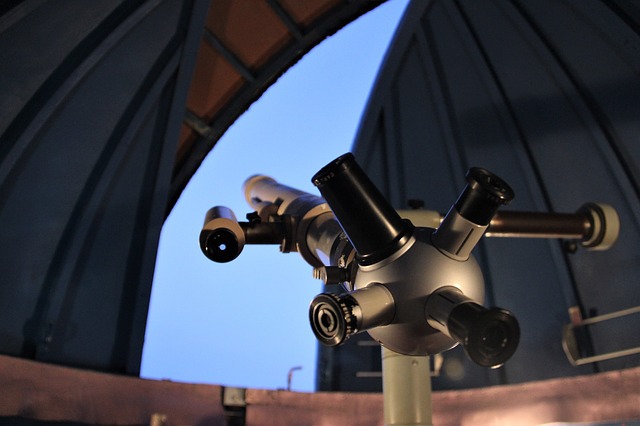*This post may contain affiliate links. This means we may make a commission if you purchase an item using one of our links*
Telescopes are built in mountains to eliminate light pollution and minimize the distorting effect of the atmosphere. Light pollution and atmospheric distortion are the two most problematic things for astronomers and the optical telescopes they use, so building the telescope on the peak of a mountain lessens these interferences as much as possible.
Ever since we built the first telescope in 1608, humans have been searching the skies, but we soon discovered that all telescope locations are not created equal. To best search the skies, we had to find the ideal locations for our telescopes.
Over time, we found that the peaks of mountains are the best place for telescopes to get the most spectacular view of the stars possible, but why exactly is a mountain such a perfect location for a telescope?
Practical Benefits Of Building Telescope On Mountains
Table of Contents
There are two main practical benefits of building a telescope on a mountain: avoiding light pollution and atmospheric distortion.
- Light pollution- Light pollution has been the bane of astronomers and casual telescope users for centuries. Light pollution, by definition, is the overabundance of artificial light that makes the light of stellar bodies harder to see.
In a crowded city full of lights, you may notice that there aren’t as many stars in the sky. In fact, there are just as many stars as usual, it’s just that the light pollution of the city is making the dimmer stars impossible to see.
By building telescopes on mountains, we lift them above the lights of these busy cities. Mountain tops are often remote, and far away from most civilizations, making them both higher than any light pollution and distanced from it all at the same time.
- Atmospheric distortion- The atmosphere is all around us, at all times, even if we can’t see it. Actually, though, we can see the atmosphere! From space, the stars don’t twinkle, but from Earth, they do. It is the atmospheric distortion that causes this twinkling effect!
The higher up we are, the less atmosphere is between us and the stars. Therefore, we build telescopes as high up as we can on the tops of mountains to cut through as much atmosphere as possible, lessening the atmospheric distortion.
Simply put, the higher the telescope is, the clearer the picture that can be seen through it.
Do Larger Telescopes Have To Be Built On Mountains?

No, larger telescopes don’t have to be built on mountains, but they get a better view of the sky if they are.
Larger telescopes are more expensive and more mechanically complicated machines than the small telescopes some of us have in our homes.
One would think that it would make more sense to build these behemoths on the ground instead of dragging them to the top of a mountain, but the benefits of building a large telescope up high far outweigh the difficulties!
Not only does building a large telescope on top of a mountain cut down on light pollution and atmospheric distortion, but if the mountain is high enough, then the telescope can also be above some clouds, allowing for a much clearer picture, even on cloudy days.
The exception to this rule is radio telescopes. Instead of using visible light like the optical telescopes most of us are familiar with, radio telescopes view the sky with radio waves.
Radio telescopes are so incredibly massive that it is actually beneficial to build them in natural depressions in the Earth, like the now-defunct Arecibo Observatory. Since radio telescopes aren’t using visible light, atmospheric distortion and light pollution isn’t as much of a problem as they are with optical telescopes.
Why Are Telescopes Often Built in Hawaii?

Hawaii is especially suited to hosting telescopes because of the number of lofty peaks, the dryness of the atmosphere, the absence of light pollution, and the lack of cloud cover. All of these things combine to form an extraordinarily pristine view from the telescopes.
That being said, building telescopes on the peaks of Hawaiian mountains is controversial, because the native Hawaiians have claimed the mountains as sacred spaces.
So although the mountains of Hawaii may be perfect for telescope building, there are hesitations to build more.
As of right now, there are 27 telescopes, both optical and radio, functioning in Hawaii. The most controversial is the currently under-construction Thirty Meter Telescope, being built on the dormant volcano Mauna Kea.
Why Are Telescopes Built Away From Cities?
Telescope are built as far from cities as possible to avoid light pollution. Highly populated cities produce massive amounts of light pollution, making it nearly impossible for telescopes to function.
Light pollution is the reason that stars are so much harder to see in the city than out in the countryside or desert. Building a large telescope in a city would be nearly pointless because the light of the city would make it too difficult to see anything of note.
Telescopes being built in remote locations can make them difficult and inconvenient to reach, but the perfectly dark, clear skies are worth any troubles the distance may cause.
Summary
We build telescopes on mountains for two main reasons:
- Light pollution
- Atmospheric disruption
These problems both dilute and distort the image from the telescope, and are especially prevalent in highly populated areas. When telescopes are built higher in the sky, and in more remote locations, we lessen these problems to a great degree.
References
https://www.exploratorium.edu/origins/hubble/place/real_estate/index.html#:~:text=Most important, putting an observatory,absorb light from the stars.

